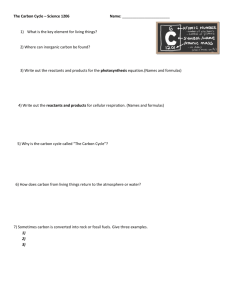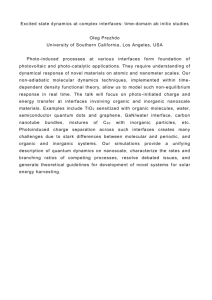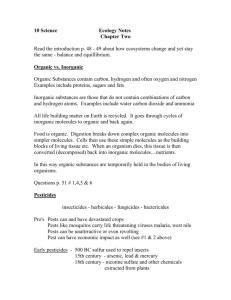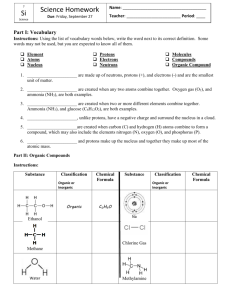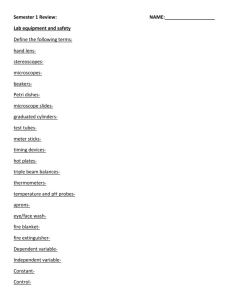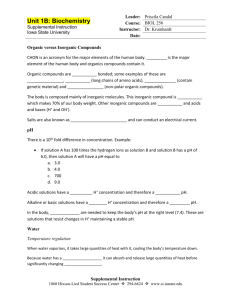עודד נהור
advertisement
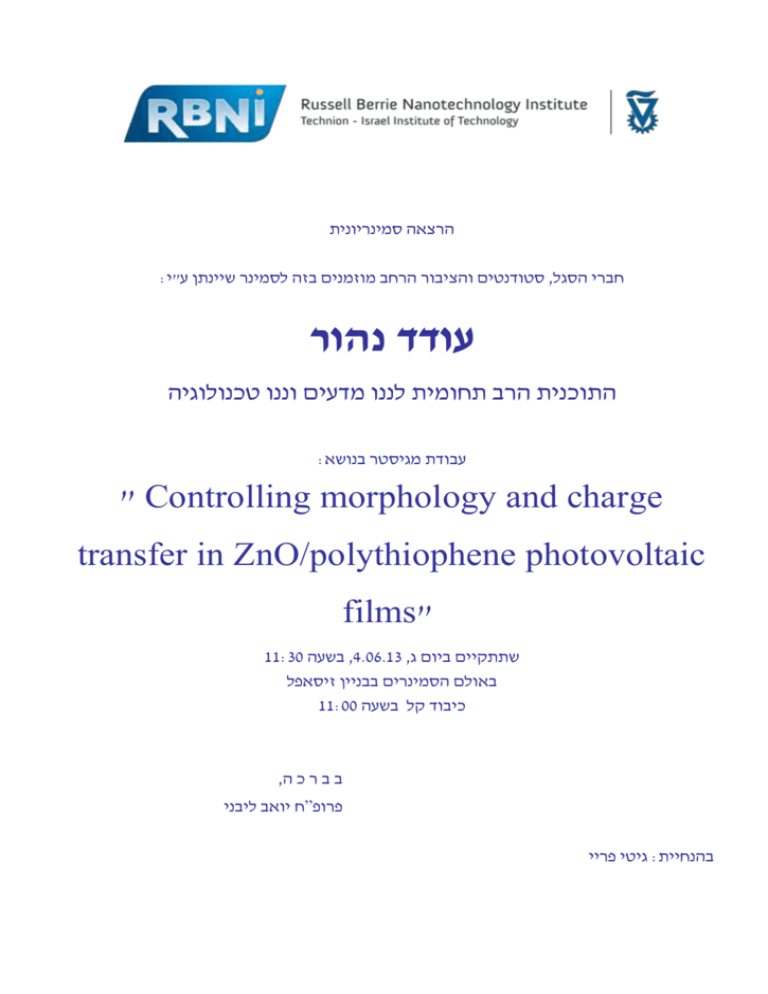
הרצאה סמינריונית חברי הסגל ,סטודנטים והציבור הרחב מוזמנים בזה לסמינר שיינתן ע"י: עודד נהור התוכנית הרב תחומית לננו מדעים וננו טכנולוגיה עבודת מגיסטר בנושא: " Controlling morphology and charge transfer in ZnO/polythiophene photovoltaic "films שתתקיים ביום ג ,4.06.13 ,בשעה 11:30 באולם הסמינרים בבניין זיסאפל כיבוד קל בשעה 11:00 ב ב ר כ ה, פרופ”ח יואב ליבני בהנחיית :גיטי פריי "Controlling morphology and charge transfer in ZnO/polythiophene photovoltaic films" Oded Nahor Supervisor: Gitti Frey Hybrid organic/inorganic solar cells composed of conjugated polymers and metal-oxides have been suggested as promising alternative to conventional Si-based solar cells. This combination offers low cost solution processing, high optical absorption and chemical versatility, endowed by the organic component; along with the mechanical and environmental stability of the inorganic component. To allow efficient charge separation, the hybrid film must fulfill some critical requirements such as: sub 20nm organic/inorganic phase separation and continuous pathways of each phase for charge transport. Owing to the different nature of the materials involved surfactants are often used to compatiblize between the organic and inorganic phases. As a result, the surfactant is present in the hybrid film and often located at the interface between the organic and inorganic phases and hinders the donor/acceptor electron-coupling thus reducing the device efficiency. In this study we replace the conventional surfactant with an optically active surfactant that both compatibilizes and plays an active role in the device. Specifically, a poly-thiophene polymer with hydrophilic urethane side-groups “surfactant” is used also as a photo-active mediator between regular P3HT and ZnO. A combination of FTIR, absorption and photoluminescence life-time spectroscopy yield insights on the composition and nano-scale interaction of the components, while highresolution electron microscopy reveals the morphology of the films. The macroscopic behavior of the photovoltaic devices can be attributed to the donor/acceptor interface and the nano-scale properties of the film.

